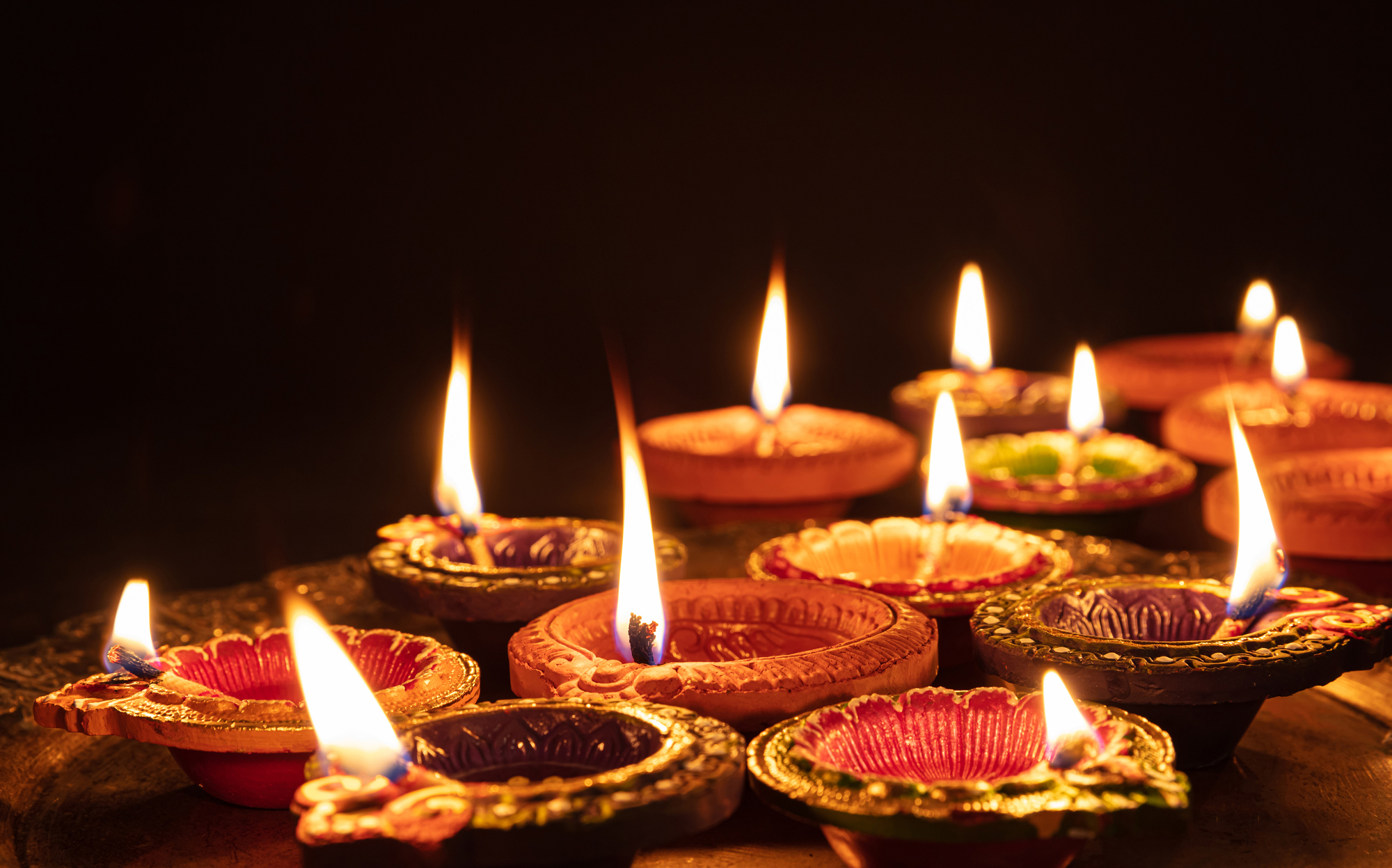
ELA-based Diwali activities give your middle and high school students the chance to work on English and Reading skills in a fun and engaging way. They can also introduce students to different cultures or literary genres with which they may not already be familiar.
In 2025, Diwali falls on Monday, October 20th. The following free Diwali activities for students—including a word search, a “virtual field trip” to India’s Diwali festival, and a comprehensive ELA activity set about the holiday—are sure to impress even the most reluctant ELA learners. We’ve also included an original Piqosity reading comprehension quiz of a delicacy-themed article from The Times of India along with original quiz questions to answer after reading!
Diwali Reading and Writing Activities
1. Diwali Word Search
The first of our featured Diwali activities is this printable Diwali word search, perfect for all grade levels. Students will search for key terms which illuminate aspects of traditional Diwali celebration practices and the origins of this light-filled holiday.
Using this Diwali activity at the start of class is a great way to get the wheels turning inside a student’s head. When they encounter a word that is unknown to them (“rangoli”, for instance), they will likely wonder about its meaning and origins. These lines of inquiry can lead them to answer the question, “What are the traditions of Diwali?”
Word searches in general help to reinforce key concepts in an English Language Arts education, including searching for context clues, increasing vocabulary, and spelling practice. You could even use the word bank from this word search as the basis for a Diwali-themed spelling test—two Diwali activities in one!
Created and made available for free download by Suzanne Welch Teaching Resources.
2. Diwali Poster Presentation and Art Projects
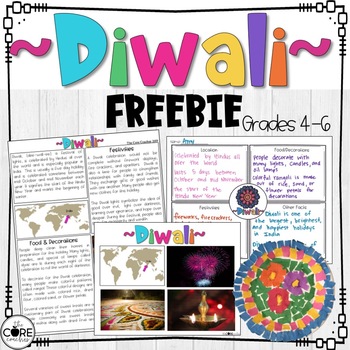 Next up is an interactive activity that’s a great fit for group projects. Students are presented with a fact sheet about the history of Diwali, this holiday’s festivities, and more information. Then, they’ll be tasked with answering five text dependent questions to help guide their reading comprehension. With their newfound knowledge of this holiday, they can then be grouped up to make a poster presentation about the holiday!
Next up is an interactive activity that’s a great fit for group projects. Students are presented with a fact sheet about the history of Diwali, this holiday’s festivities, and more information. Then, they’ll be tasked with answering five text dependent questions to help guide their reading comprehension. With their newfound knowledge of this holiday, they can then be grouped up to make a poster presentation about the holiday!
This printable packet includes images about the holiday to use for the posters and the reading comprehension exercise, so there are no outside resources required—other than the poster board and markers! A rubric is also included to guide your students as they create their presentation.
This resource is super adaptable to your classroom’s needs. If you teach middle schoolers, expand the project by having them do their own research about particular Diwali-related topics, too. If you don’t have the poster board or markers to spare, a “note catcher” template is included for individual work, or you can substitute the physical presentations with slideshows. Plus, if your class is in need of an art project to work their creative muscles, two crafting ideas are included at the end!
Created and made available for free download by The Core Coaches.
3. Diwali Wordsmithing Activities
 Our third featured printable Diwali activity focuses on students’ vocabulary skills. This short-and-sweet freebie is an excellent supplement to other Diwali activities, such as projects in this collection or a simple lesson on the basics of the holiday. Included is an anagrams activity, where students are tasked with unscrambling six jumbles of letters—the true words are some of the key features and terminology from the holiday.
Our third featured printable Diwali activity focuses on students’ vocabulary skills. This short-and-sweet freebie is an excellent supplement to other Diwali activities, such as projects in this collection or a simple lesson on the basics of the holiday. Included is an anagrams activity, where students are tasked with unscrambling six jumbles of letters—the true words are some of the key features and terminology from the holiday.
Next, students are presented with a short phrase about Diwali. They must make their own words from the letters of the phrase, with columns for 2-letter words, 3-letter words, and 4-or-more-letter words. This activity will have them test their perceptiveness and word knowledge as they investigate for words. Teachers of 3rd and 4th graders especially found this activity engaging for their students, who loved learning about the holiday and solving the creative word puzzles!
Created and made available for free download by Resources by Rachel.
4. Diwali Close Reading, Vocabulary, & Writing Exercise
Another of our printable Diwali activities, this exercise focuses on developing students’ close reading skills through an exploration of the history of Diwali.
First, students read a passage (aimed at middle-school readers) that describes Diwali’s traditions and origin. Topics include a discussion of the use of candle holders and other decorations and the purpose and technique of Rangoli design. The passage is followed by eight reading comprehension questions and two critical thinking questions.
Students are also quizzed on key vocabulary words from the passage, encouraging the use of context clues to identify unfamiliar words. An accompanying long-form writing activity asks students to use their language skills in conjunction with their newfound knowledge of Diwali. The activity concludes with a creative task: students have the opportunity to fill in an outline of a rangoli design with bright colors, and are encouraged to draw their own design!
This packet of Diwali activities offers a perfect opportunity to lead a class Diwali celebration without abjuring engaging classwork. To enhance your classroom even more, seven graphic posters focused on key concepts related to the holiday are also provided.
Created and made available for free download by Mikey D Teach – SELebration Learning.
Diwali Reading Comprehension Questions by Piqosity
A beautiful festival full of bright colors, delicious food, and deep tradition, Diwali is a cherished Hindu holiday. But traditions evolve; the following passage is an excerpt from an article in The Times of India focusing on how the traditional sweets market is adapting to modern life.
Piqosity’s incredible team has written three exclusive reading comprehension questions to accompany this passage. Each question engages with a different area of English Language Arts, and the questions are progressively more difficult. (Answers below.)
Excerpt from “Traditional Hyderabadi Sweets are Selling like Hot Cakes this Diwali” by Thadhagath Pathi
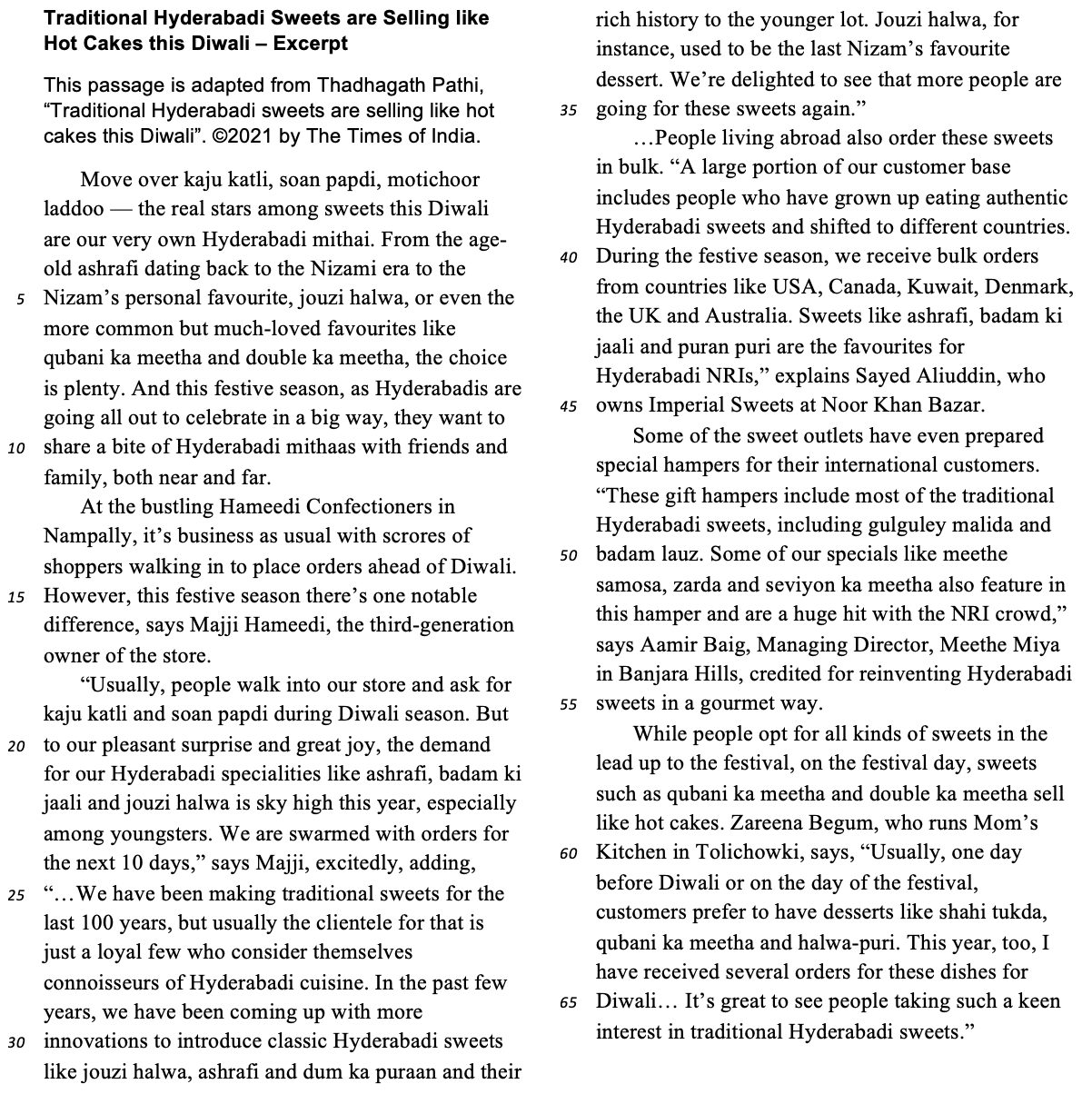
Reading Comprehension Questions
1. The title of this passage contains…
A. a metaphor.
B. an oxymoron.
C. anaphora.
D. a simile.
2. Which of the following ideas is NOT identified in the text?
A. Younger people are eating more traditional sweets.
B. Sweets-makers are overcoming supply shortages.
C. Eating sweets is popular during the Diwali season.
D. Sweets-makers are coming up with new innovations in time for Diwali.
3. “Mithaas” (line 10) is a Hindi word. Based on the context given by the passage, which of the following is most likely to be its meaning in English?
A. Cupcakes
B. Celebrations
C. Sweets
D. Chocolate
Passage Answer Key and Explanations
1. D.
This question asks about the title.
Anaphora is the repetition of a word/phrase at the beginning of multiple lines/sentences—the title is one sentence with no repeated words, so answer C is incorrect. An oxymoron is a pair of two words that contrast each other, such as “small crowd” —there is no oxymoron in the title, so answer B is also incorrect.
The title compares the popularity and success of traditional Hyderabadi sweets to hot cakes using the linking word “like”. A simile is a comparison between two or more things using “like” or “as”, while a metaphor is a comparison that does not use “like” or “as”.
Thus, the correct answer choice is answer D, “a simile.”
2. B.
Answer A, “Younger people are eating more traditional sweets,” is identified in lines 20-35: “…the demand for our Hyderabadi specialities like ashrafi, badam ki jaali and jouzi halwa is sky high this year, especially among youngsters….we have been coming up with more innovations to introduce classic Hyderabadi sweets like jouzi halwa, ashrafi and dum ka puraan and their rich history to the younger lot. Jouzi halwa, for instance, used to be the last Nizam’s favourite dessert. We’re delighted to see that more people are going for these sweets again…”
Answer C, “Eating sweets is popular during the Diwali season,” is also identified in the text. It is based on the overall premise of the passage and specifically discussed in lines 12-14: “At the bustling Hameedi Confectioners in Nampally, it’s business as usual with scores of shoppers walking in to place orders ahead of Diwali.”
Finally, Answer D, “Sweets-makers are coming up with new innovations in time for Diwali,” is identified in lines 29-32: “….we have been coming up with more innovations to introduce classic Hyderabadi sweets like jouzi halwa, ashrafi and dum ka puraan and their rich history to the younger lot,” and in lines 36-49: “Some of the sweet outlets have even prepared special hampers for their international customers. ‘These gift hampers include most of the traditional Hyderabadi sweets…’”
Answer B, “Sweets-makers are overcoming supply shortages,” is the correct answer choice because it is not identified in the text. There is no mention of any supply shortages in the passage.
3. C.
We are looking for a word that can replace “mithaas” in context: “…this festive season, as Hyderabadis are going all out to celebrate in a big way, they want to share a bite of Hyerabadi mithaas with family and friends, both near and far,” (lines 8-11).
“Mithaas” must be a food item, because people want to “share a bite” of it. So, answer B, “Celebrations,” is incorrect. Answers D and A, “Chocolate” and “Cupcakes,” could be true, but they’re very specific—the passage doesn’t mention either food by name, so there’s no way to know which, if either, would be a better choice. So, these answer choices are also incorrect.
This leaves answer C, “Sweets”, which is the correct answer choice. “Sweets” is used throughout the passage to describe the delicacies people are eating for Diwali, so it’s a logical deduction that people “…want to share a bite of Hyerabadi [sweets] with family and friends…” (9-11).
Interested in learning more? You can read the full article in The Times of India.
Find More ELA Resources Like These at Piqosity!
We hope you enjoyed these ELA Diwali activities! Dedicated English lessons for the holidays are always a hit—each holiday has a deep history and many traditions, perfect for reading comprehension passages and vocabulary quizzing while students enjoy learning about and celebrating various cultures and events. If you want more seasonal activities to use as learning tools in class, check out our collection of Halloween activities and upcoming Thanksgiving activities!
The above test is just a sample of what Piqosity’s courses have to offer! You can find more (non-Diwali-themed) English lessons with questions of similar difficulty levels in our ELA courses. These are complete courses available online through our app and can be purchased separately or received for FREE when bundled with our ISEE test prep courses!
- 5th Grade ELA Course
- 6th Grade ELA Course
- 7th Grade ELA Course
- 8th Grade ELA Course
- 9th Grade ELA Course
- 10th Grade ELA Course
- 11th Grade ELA Course
The best part? You can try out all of Piqosity’s features with our free community account. When you’re ready to upgrade, Piqosity’s year-long accounts start at only $89. Plus, get a 10% off coupon just by signing up for our mailing list!


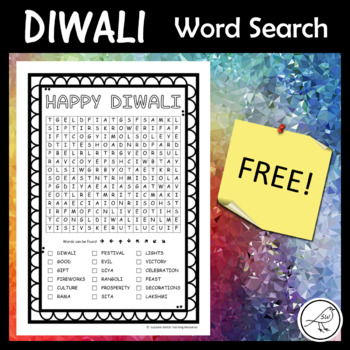
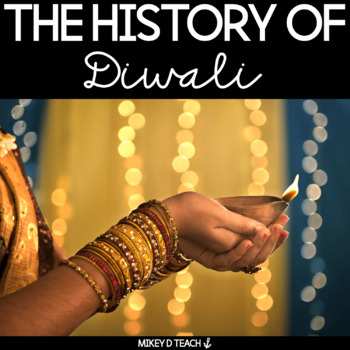

Leave A Comment
You must be logged in to post a comment.